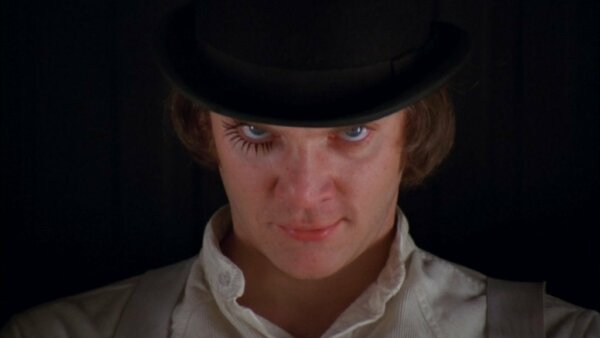Criminal Psychology: Examining Criminal Behavior

Why does crime occur? How can you explain antisocial and criminal behavior? For years, social psychology has tried to answer these questions, and this is why criminal psychology has come to the fore.
Among the main fields of interest in criminal psychology are antisocial behavior, aggression, or the study of social bonding and crime. But how can we explain criminal behavior? Well, it seems that it involves emotions, rewards, and personality traits, as well as beliefs and attitudes (1).
Thus, the main goal of criminal psychology, during its short time of existence, has been to understand the reason for criminal phenomena and the behavior patterns that give rise to them. But how does a person become a criminal? According to researchers Santiago Redondo and Antonio Andrés Pueyo, from the University of Barcelona, five factors explain it.
Why does crime happen?
The research considers these five factors as explanations for crime. They’re the following (1):
1. Crime is learned
The model that dominates the explanation of crime is the one formulated by Akers (2). This model states that there’s an interrelationship between four mechanisms in the learning of criminal behavior:
- Inferential association with people who show criminal habits.
- The acquisition of definitions that favor criminal behavior.
- The differential reinforcement of their criminal behavior.
- The imitation of pro-criminal models.

2. Individual traits and characteristics predispose people towards crime
According to biopsychological research, some factors may play a role in antisocial or criminal behaviors. Some of these characteristics would be some sort of cranial injury, low activity in the autonomic nervous system, or low activity in the frontal lobe.
3. Crimes are reactions to individual experiences of stress and tension
Over the years, research into criminal psychology has focused on experiences of stress as a cause of criminal behavior. (3, 4). Many homicides, assaults, or femicides, as well as robberies with intimidation, are perpetrated by individuals who experience strong feelings of revenge, anger, anxiety, or contempt for others.
The general theory regarding stress, in turn, points out the direct relationship between the presence of stress in a person and committing crime (5).
- Firstly, it seems that the person may be affected by several different sources of stress. Among these, some stand out, such as being subjected to unavoidable aversive situations.
- Secondly, as a result of this type of tension, the person could suffer from negative emotions that could cause them to want to correct the situation. An example of these emotions could be anger.
- Thirdly, criminal behavior would be a possible corrective action against a source of tension that a person’s experiencing.
- Finally, if the source is removed, then the tension is relieved. This strengthens the behavioral mechanism that the person uses to relieve the tension.
4. Involvement in criminal activities is the result of the breakdown of social bonds
Travis Hirschi, an American sociologist and criminologist, established that several social contexts join young people to society. These include school, family, friendships, and others, such as hobbies and sports. The degree to which a person is attached to these contexts is determined by the following bonding mechanisms: attachment, commitment, participation, and beliefs.
As a result, Hirschi believes that the reason for antisocial behavior lies in the breakdown of mechanisms in one or more social contexts.
5. Initiating and continuing the criminal life relates to the individual’s development, especially in childhood and adolescence
In criminal psychology, experts determine criminal development. In this part of criminal psychology of crime, they’ll study how criminal attitudes develop in a person’s life.

Prevention and treatment in crime psychology
To conclude, we’re going to briefly focus on the situation in Spain. Spain has several types of psychological treatment for offenders, mainly in prisons. These include:
- Young inmates.
- Sex offenders.
- Abusers.
- High-risk offenders.
- Treatment aimed at suicide prevention.
Redondo points out that the great problem facing the application of these treatment methods in Spanish prisons is the sheer number of people in prison.
It seems that this is increasing every day. However, this isn’t due to an actual increase in the number of crimes. The increase in the number of people imprisoned is due, curiously, to a notable and systematic hardening of the penal system.
So, as you can see, it seems that several factors come together to make crime happen. The field of criminal psychology has been trying to explain, prevent, and treat criminal behavior for years, relying on ironclad theories. However, further research seems to be necessary, particularly in improving the prevention and treatment of so-called antisocial behavior.
Why does crime occur? How can you explain antisocial and criminal behavior? For years, social psychology has tried to answer these questions, and this is why criminal psychology has come to the fore.
Among the main fields of interest in criminal psychology are antisocial behavior, aggression, or the study of social bonding and crime. But how can we explain criminal behavior? Well, it seems that it involves emotions, rewards, and personality traits, as well as beliefs and attitudes (1).
Thus, the main goal of criminal psychology, during its short time of existence, has been to understand the reason for criminal phenomena and the behavior patterns that give rise to them. But how does a person become a criminal? According to researchers Santiago Redondo and Antonio Andrés Pueyo, from the University of Barcelona, five factors explain it.
Why does crime happen?
The research considers these five factors as explanations for crime. They’re the following (1):
1. Crime is learned
The model that dominates the explanation of crime is the one formulated by Akers (2). This model states that there’s an interrelationship between four mechanisms in the learning of criminal behavior:
- Inferential association with people who show criminal habits.
- The acquisition of definitions that favor criminal behavior.
- The differential reinforcement of their criminal behavior.
- The imitation of pro-criminal models.

2. Individual traits and characteristics predispose people towards crime
According to biopsychological research, some factors may play a role in antisocial or criminal behaviors. Some of these characteristics would be some sort of cranial injury, low activity in the autonomic nervous system, or low activity in the frontal lobe.
3. Crimes are reactions to individual experiences of stress and tension
Over the years, research into criminal psychology has focused on experiences of stress as a cause of criminal behavior. (3, 4). Many homicides, assaults, or femicides, as well as robberies with intimidation, are perpetrated by individuals who experience strong feelings of revenge, anger, anxiety, or contempt for others.
The general theory regarding stress, in turn, points out the direct relationship between the presence of stress in a person and committing crime (5).
- Firstly, it seems that the person may be affected by several different sources of stress. Among these, some stand out, such as being subjected to unavoidable aversive situations.
- Secondly, as a result of this type of tension, the person could suffer from negative emotions that could cause them to want to correct the situation. An example of these emotions could be anger.
- Thirdly, criminal behavior would be a possible corrective action against a source of tension that a person’s experiencing.
- Finally, if the source is removed, then the tension is relieved. This strengthens the behavioral mechanism that the person uses to relieve the tension.
4. Involvement in criminal activities is the result of the breakdown of social bonds
Travis Hirschi, an American sociologist and criminologist, established that several social contexts join young people to society. These include school, family, friendships, and others, such as hobbies and sports. The degree to which a person is attached to these contexts is determined by the following bonding mechanisms: attachment, commitment, participation, and beliefs.
As a result, Hirschi believes that the reason for antisocial behavior lies in the breakdown of mechanisms in one or more social contexts.
5. Initiating and continuing the criminal life relates to the individual’s development, especially in childhood and adolescence
In criminal psychology, experts determine criminal development. In this part of criminal psychology of crime, they’ll study how criminal attitudes develop in a person’s life.

Prevention and treatment in crime psychology
To conclude, we’re going to briefly focus on the situation in Spain. Spain has several types of psychological treatment for offenders, mainly in prisons. These include:
- Young inmates.
- Sex offenders.
- Abusers.
- High-risk offenders.
- Treatment aimed at suicide prevention.
Redondo points out that the great problem facing the application of these treatment methods in Spanish prisons is the sheer number of people in prison.
It seems that this is increasing every day. However, this isn’t due to an actual increase in the number of crimes. The increase in the number of people imprisoned is due, curiously, to a notable and systematic hardening of the penal system.
So, as you can see, it seems that several factors come together to make crime happen. The field of criminal psychology has been trying to explain, prevent, and treat criminal behavior for years, relying on ironclad theories. However, further research seems to be necessary, particularly in improving the prevention and treatment of so-called antisocial behavior.
All cited sources were thoroughly reviewed by our team to ensure their quality, reliability, currency, and validity. The bibliography of this article was considered reliable and of academic or scientific accuracy.
-
Redondo Illescas, S., & Pueyo, A. A. (2007). La psicología de la delincuencia. Papeles del psicólogo, 28(3).
-
Akers, R. L. (2006). Aplicaciones de los principios del aprendizaje social. Algunos programas de tratamiento y prevención de la delincuencia. Derecho penal y criminología como fundamento de la política criminal, 20, 1117-1138.
- Andrews, D. y Bonta, J. (2006). The Psychology of Criminal Conduct (4ª ed.). Cincinnati (EEUU): Anderson Publishing Co.
- Tittle, C. (2006). Desarrollos teóricos de la Criminología. En R. Barberet y J. Barquín (ed.), Justicia penal siglo XXI. (pp. 1-54). Granada: Editorial Comares.
- Agnew, R. (2006). Pressured into crime: an overview of general strain theory. Los Ángeles: Roxbury Publishing Company.
- Redondo, S. (2007). Manual para el tratamiento psicológico de los delincuentes. Madrid: Pirámide.
This text is provided for informational purposes only and does not replace consultation with a professional. If in doubt, consult your specialist.







